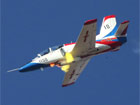筆供英文內(nèi)容提要(Abstract of the Written Confessions in English)
Kenjirō Funaki(船木健次郎)
According to the written confession of Kenjirō Funakifrom May to June 1954, he was born in Toyama Prefecture, Japan in 1897. He went to northeast China in December 1937 and served as major and battalion commander of the 4th Frontier-Guard Infantry. He returned to Japan in August 1943 and later went to the Korean Peninsula. He became colonel and commander of the 375th Regiment of the 137th Division in June 1945. He was captured by the Soviet Army on 15 August 1945.
Major offences:
“There were several cases when my battalion was instructed by the division commander to destroy the villages. The exact year, month, date or place could not be remembered. One village was about 15 kilometers to the south of Dongzhaitang and had about 15 households; another village was 20 kilometers to the southwest of Dongzhaitang and had around 15 households; and the third was 20 to 30 kilometers to the northwest of Dongzhaitang and had about 15 households”;
“In August 1941, in a brigade battle to the southwest of Wanping County”, “the reserve forces burnt down a village (about 45 kilometers southwest to Dongzhaitang) which had about 15 households as I remember”;
“In April 1943, in a brigade battle to the south of Wanping County”, “the reserve forces burnt down several villages (about 60 kilometers to the southwest of Dongzhaitang) in that area”;
“About enslaving local residents”, “I remember 6 positions with the capacity of holding 7 to 20 guards each were built, for which 1,500 person-time were needed. Also to consolidate the existing positions in about three places from Dongzhaitang as I recall, 1,000 person-time was needed.” “To build the ‘interception trench’ for the purpose of economic blockade”, “about 15 kilometers of the trench was actually built, for which 1,000 to 2,000 labors were needed every day in about one month”;
“As for the use of poison gas, our battalion was not issued the poison gas, but was issued the red colored canisters. I think it was in 1942. When the Brigade Armament Department issued them, a Battalion Armament Department officer told me that the red colored canisters were categorized as poison gas weapons. I do not remember the exact number of the red colored canisters issued. I think they were evenly distributed among the companies. I do not remember the details of how each company used it.”












